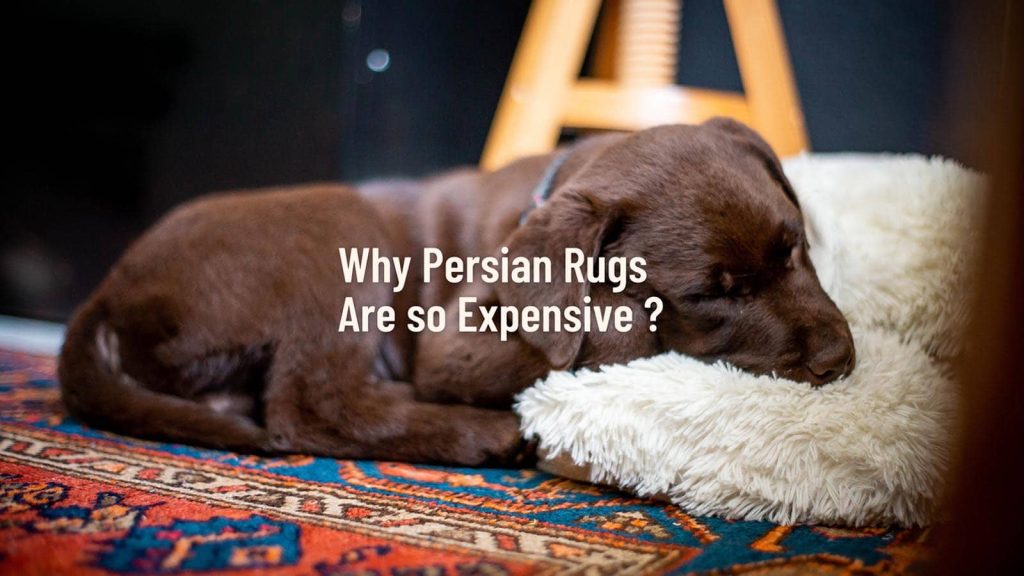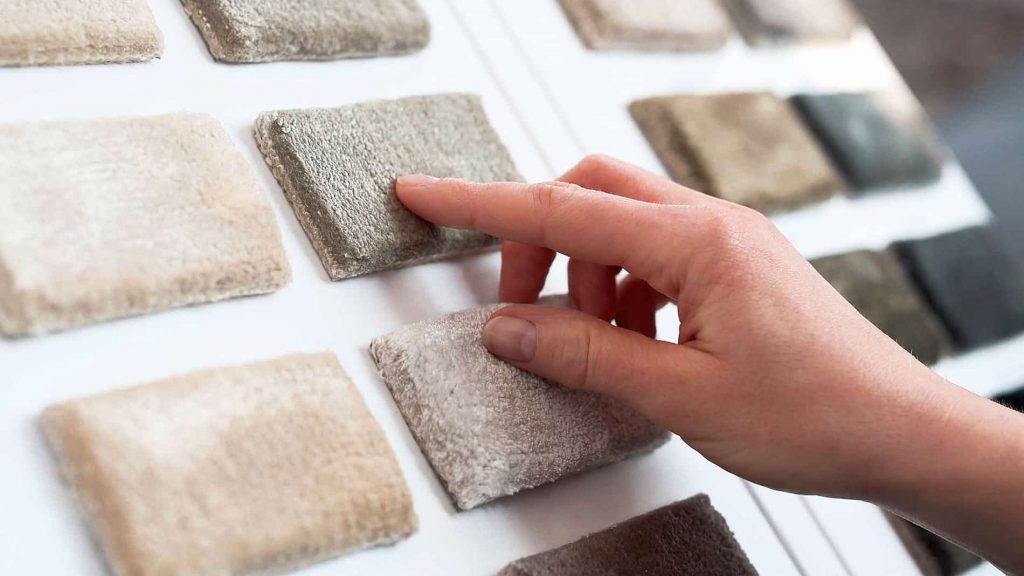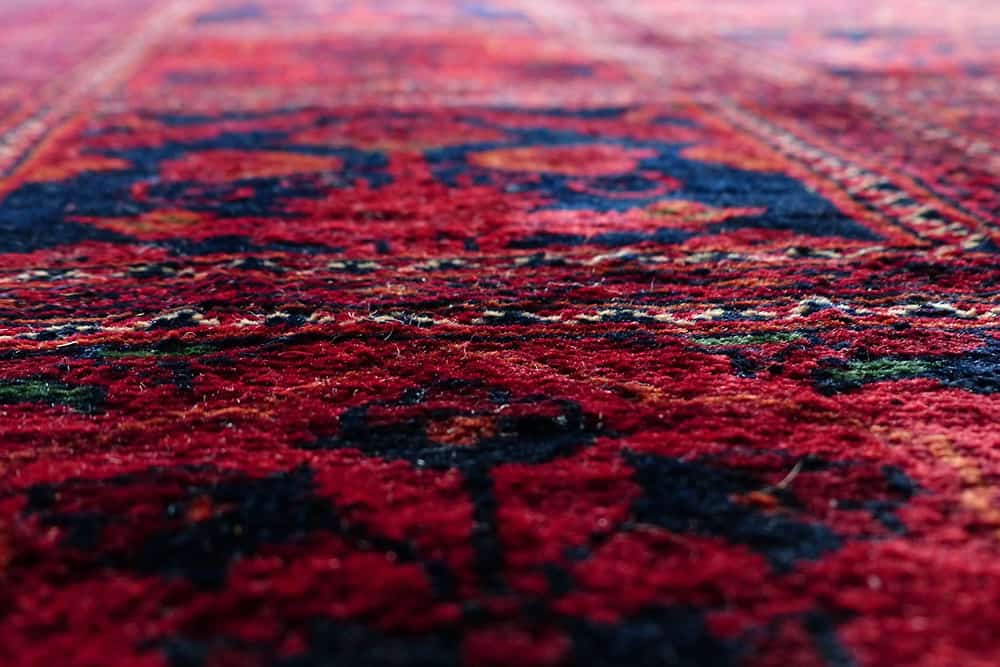
Why Persian Rugs Are so Expensive
Why Persian Rugs Are so Expensive https://www.carpetgurus.com/wp-content/uploads/Why-Persian-Rugs-Are-so-Expensive-1024x576.jpg 1024 576 Jennifer Dean Jennifer Dean https://secure.gravatar.com/avatar/a12339e5b4dc251257b22c265dbeca84?s=96&d=mm&r=gEvery year, an estimated 2.5 million carpets and rugs are sold worldwide. However, only a small percentage of these items are Persian rugs.
Persian rugs are often considered to be among the most valuable and beautiful pieces of art in many homes. They have been prized for centuries because of their rarity, craftsmanship, age, and the precious materials that the weavers use.
The best Persian rug is made with silk wool on a cotton foundation, which is then dyed with natural dyes found in the environment. These include indigo and black walnut.
One reason for the high price is because Persian rug weaving is such an art form that takes years to master. For example, just one square foot of a Persian rug can take up to 30 hours to complete by hand, which accounts for their high cost.
- History of Persian rugs
- Difference between Persian carpets and rugs?
- Classification of Persian rugs
- What are the different types of Persian rugs?
- What materials are used to make Persian rugs/carpets?
- How are hand-knotted Persian rugs/carpets made?
- Why are Persian rugs so expensive?
- How much does a Persian rug cost?
- Conclusion
History of Persian rugs
Ever wondered where did it start from?
It dates back to over 5000 years old practices when Nomadic tribes started to hand-wove the rugs to keep the cold grounds cozy.
Ancient tribes wove reeds and grasses and designed their very own tribal-style rugs. They also used camel, goat, and sheep hair. Archaeologists have collected shreds of evidence on these handmade rugs for more than 4000 years now.
Fermenting wool fibers before dyeing them might have been the technique used to produce the vibrant colors of the Pazyryk Carpet, which was buried almost 2,500 years ago with a member of a nomadic Scythian people.https://t.co/X8GCuojAhm pic.twitter.com/Qd744WRE8h
— Archaeology Magazine (@archaeologymag) June 19, 2021
The oldest surviving rug witnessed is PAZYRYK Carpet. It precedes 500 BC. It was exposed from the grave of the royal Scythian in Siberia in 1949. Despite time and age, the carpet proved its worth for intricate technique and beautiful rich colors.
Difference between Persian carpets and rugs?
Both the words carpets and rugs are known as synonyms to each other. The word Rug derives its meaning from “Rugged” which refers to deep, rough, and extensive piles. The rugs are floor covering that doesn’t bond with the entire floor and specify partial coverings. They are not glued to the floor.
Initially, the word carpet referred to any covering such as table covers or wall hangings, etc. Carpets cover the floor completely. They aren’t placed directly but glued to the bottom.
Classification of Persian rugs
The birth of Persian rugs dates back to the ancient Persian Empire. Handweaving was a highly respected and regarded art form. It all happened because of the geographical differences and imposed isolations that every region had its distinctive style and easy to hand-weave the antique rugs/carpets.
Historians had unraveled the different designs of Persian rugs through symbols weaved in their intricate designs.
You can classify Persian rugs into two categories
1. City rugs are hand-knotted but made in an organized sector where artists have a blueprint for designs and weaving. They are weaved with cotton or silk foundation. These rugs use at least 15 colors in a single design and are of the highest quality.
2. Tribal rugs are designed and weaved by the same person and based on ideas or images in their mind. Their idea is inspired by travels or some memory. There exists no blueprint to weave with them and made at home or in tents. Nomadic Persian rugs have a wool foundation. They are more symmetric, beautiful, and highly piled suiting oriental demands and vogue.
What are the different types of Persian rugs?
Isfahan
These are floral designs whose work inspiration is from tile work in mosques or gardens in palaces. The knot count is high in these types of rugs. They are well-reputed and one of the best quality rugs you can find.
Nain
Nain is a beautiful city to the east of Isfahan. They are mostly floral designs. The color palette chosen for such oriental rugs is navy blues, light blues, ivory, and pink. You have patterns in green and red colors too.
Standard Nain’s are made outside the city. Rugs weaved in the city are usually three-knot type (4La, 6La, and 9La). “La” refers to layers of threads.
The quality and price depend on this value. The lower the La number, the higher is the quality and density carpet knots have.
These are the most demanded Persian rugs across the UK because of their subtle color combinations.
Tabriz
Tabriz is known for its unique patterns. They have a central medallion fenced by some floral patterns and arabesques. Tabriz has the most diversified range of designs. Their most popular design is to buy the name of the city itself, “Tabriz Mahi”.
Qom
Qom is also famous for the names Qum, Ghom, or Ghome. The city is renowned for silk-woven rugs and probably is the highest knot count.
The details are intricate and minutely captured. They are one of the kinds and finest of the lot. It features plants, animals, gardens, and medallion motifs.
Abadeh
These have been known for beautiful patterns of vases and soft colors. Their inspiration hales from geometric designs.
Today, they are recognized by famous hexagons in the center and flowers, trees, and birds in their surroundings and border.
Ardebil
These are found in London’s Royal Victoria and Albert Museum. Their distinguished patterns have a thinner pile and geometric patterns.
Bidjar
For many weavers, Bidjar refers to durability and strength. The pile is very light. It is “The King of Carpets” and has an extraordinary weaving technique/superiority over others.
Their best and most demanded design is “Herati”. They are trendy in the UK.
Hamadan
They are easily recognized with repeated patterns in their designs. These are most geometric patterns using deep color palettes.
Heriz
Heriz is large-sized rugs (usually starting from 300x200cm). it has marked corners and a big right-angled medallion in the center.
Kerman
These rugs have been used for the Persian over-dyed collection. They are made of wool. Their base is usually red with a dominating central medallion and little patterns as surroundings or borders.
Keshman
They are referred to as “Village rugs”. They are rich in reds and blues. The floral patterns dominate this type.
Moud
They use Herati patterns. They come with central medallions and all-over designs.
Senneh
Their patterns are the finest and most elegant. Dark blues and red is their prime color. Their designs are also unique.
Afshar
They are geometric patterns in general.
Baktiyar
Baktiyar is an old-school design made with Khesti (a garden motif). Most designs have beautifully weaved plants and animals symbolic of Persian culture.
Baluch
These are rich in colors and geometric patterns. They represent the nomadic Persian weaving style. They are long and narrow.
Gabbeh
Primarily, they are used as sleeping rugs. These are woven tightly with a thick, cozy pile. They are the simplest in Persian rugs but the thickest in their category. Its pile measures around 7mm.
Qashqai
Qashqai uses deeper shades as their base, and the pattern is weaved with one’s idea from his memories or inspiration from plants/animals. They are 100% wool, easy to roll and transport.
What materials are used to make Persian rugs/carpets?

1. Wool -readily available, soft, long-lasting.
2. Silk – extremely fine and durable.
3. Cotton – commonly used to weave the foundation.
How are hand-knotted Persian rugs/carpets made?
The first step is designing a piece. Then weaver treats the wool or silk and dyes them with preferred colors. Wraps are attached to the loom. Wefts are tied horizontally. The foundation is weaved first and the weaver then ties rows of knots between previously made wefts. Lastly, they shave the carpet. Later, it is washed and inspected for final use.
Why are Persian rugs so expensive?
· They are typically hand-woven. Their designs are unique and not mass-produced.
· The uniqueness and vivid appearance entirely depend on how dense and compact the knots are. This offers the buyer a one-of-a-kind of a self-made artistic piece.
· The raw material is entirely natural. The dyes are typically extracted from plants and vegetables native to their field.
· They are eco-friendly.
· They are a beautiful asset for generations to come.
· Knotting technique that makes them special needs years to master. The smaller and denser knots settle down per square inch, producing an ornate masterpiece.
· These are considered antiques. Each Persian rug is rare and unique as it takes years for them to create it.
· Its cost entirely depends on where your rug is weaved. If it is exclusively weaved in villages or cities.
· You may find a copy of these expensive and exclusive rugs in oriental regions. But authentic and trusted art pieces come with a price.
How much does a Persian rug cost?
Rug prices depend on many factors, such as the type of rug, where it was woven, the size, age, condition, and material. Generally, prices are listed in square meters.
For a 4×6 Persian rug, the average price is around $400. However, you can find inexpensive small pieces of good quality rugs starting from $70, and you can also find pure silk rugs from Qom and Tabriz that can cost $100,000 each.
Identifying authentic Persian rugs
- Each space has a unique design. These rugs are not woven in different sizes.
- Irregular detailed patterns indicate hand-knotted Persian rugs/carpets.
- They won’t have sewn-on-fringes.
- They are made from pure silk, wool, and cotton.
- Knot density can help you guess its authenticity.
- They should be somewhere 3mm to 6mm thick.
Conclusion

If you admire the unique and signature art pieces, invest in a worthy Persian rug. It’s decent to take some time to navigate your markets to find that one masterpiece depicting your personality and enhancing your home décor with dazzles.
Buying an authentic Persian rug is a deal. Make sure you measure your space well before placing the order and discuss the idea and color desired.
These are miraculous modern life artworks that bow down through generations. Whether you don’t owe any priced possession, seal the day, and book your art piece now.
We wish you happy and cozy shopping.
If you buy something on this page, we may get a small share of sale at no additional cost to you. We only recommend products that we have used ourselves and feel are really useful, not because of the limited compensation from the links through our posts.
- Posted In:
- Must Read Stories
Jennifer Dean
Jennifer Dean is an entrepreneur, speaker, coach, author and mother of two beautiful kids. You can visit her at www.CarpetGurus.com
All stories by: Jennifer Dean







Luke Smith
It’s great that you talked about how Persian rugs are typically hand-woven, which means their designs are unique and not mass-produced. We are currently changing the interior design of our house and we think it would look good with some rugs. With that in mind, I am thinking of visiting a Persian rug retailer later and buy a few sets of rugs.